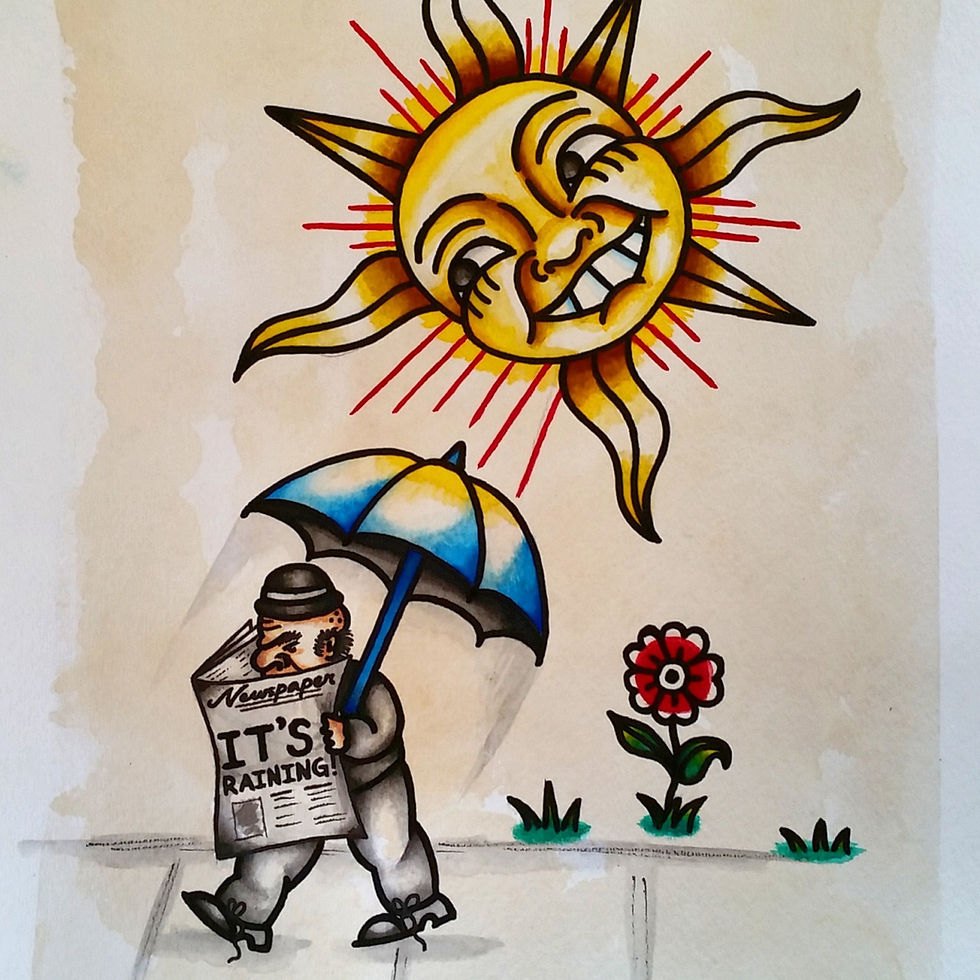The Science Behind Fake News
- Toni van der Meer
- Mar 15, 2017
- 4 min read

The ‘rise’ of fake news
With stories about speculations over the MH17 crash, claims that Pope Francis endorsed Trump, and a Chinese zoo naming a gorilla Harambe McHarambeface, 2016 became the year of fake news. These types of untruths are frequently being shared around the world as factual news. The sensational character of fake news makes it even more likely to be shared than real news. This rapid and uncontrolled spread of fake news has also raised concerns to what extent it can swing political elections (both in the US and Europe) or affect individuals (see "pizzagate" incident). While the term fake news has only recently become widely used, it is not a new phenomenon. Social scientists have dealt with it for quite some time, by studying the phenomenon under the term “misinformation”.
The persistence of erroneous beliefs
The main problem with misinformation is that it is hard to correct once it solidifies. For example, even after scientific consensus, many parents decide not to immunize their children based on misinformation claims of a vaccination-autism link, increasing preventable hospitalizations and deaths. Scientific literature provides several cognitive reasons that could explain why misinformation is so “sticky”. For example, people prefer to ignore the correction of misinformation because they get confused by contradicting information or they just do not like to be told what to think.
Yet, misperceptions primarily persist when tightly intertwined with strongly held beliefs or ideologies. As a possible explanation, the theory of motivated reasoning argues that individuals evaluate information in a biased manner to remain consistent with existing beliefs. This is for example reflected in the fact that more Republicans, compared to Democrats, continue to falsely believe that there were weapons of mass destruction in Iraq and that former president Obama was born outside the US.
Hence, simple efforts to correct misinformation will not stop its influence on public perceptions. Correcting misinformation is not only found to be often unsuccessful but could even backfire and strengthen the initially held (false) beliefs, especially if it concerns complex issues like climate change, tax policies, or decisions to go to war.
The consequences
Thus, studies confirm the concerns that misinformation, like fake news, can have far-reaching societal consequences. These effects of misinformation can be explained by the central role of communication in our mediated society. Communication, in this case the spread of misinformation, can shape what is considered real and produce perceptions with real-world consequences. For example, in the context of health communication, most (re)tweets during the Ebola outbreak in west Africa were found to contain misinformation about the potential cure. If left undisputed, such misinformation cannot only undermine actual public health efforts but also exacerbate the spread of the epidemic.
Today’s fake news
The fast online circulation and increasing quantity might make today’s fake news an even more complex phenomenon to deal with. Especially now that “facts” even have become debatable. People don’t know what to believe anymore and how to tell what is fake news and what is real news. As a result, people today might rely more on easily-available clues or heuristics to evaluate the credibility of a story. Elements such as initial attitude and ideology might weight even stronger for assessing today’s (fake) news, but factors such as emotions or whether your friends share a message might also become crucial.
What is next?
As people generally have the tendency to believe what they read, should we, as information consumers, be reeducated to function in the age of information overload? To effectively evaluate information credibility, we require more critical thinking and healthy skepticism to check and balance information. Knowing that news can be unreliable, the warning signs are easier to spot and we will be more cautious when sharing news. Organizations as Facebook and Google recently started to see their role in this process and aim to ban misinformation. However, the question is whether these fact-checking practices are sufficient to secure a faire democracy in the future? Maybe these organizations should start with being transparent about what determines what we see on our news feeds and find online, based on (undisclosed) algorithms, to make us aware of the filter bubble we live in. At this point, we might be too focused on whether news is in line with what we already believe rather than what is factual.
Moreover, in a world where it is hard to know what to trust, we should be able to rely on news media. In the context of fake news, journalists need to be careful with oversimplifying or overdramatizing facts as it could lead to misunderstanding and avoid that rushing for timely news coverage results in unvalidated or incorrect information. Also, media should move away from the forced journalistic principle of balanced coverage when it is redundant. When there is factual consensus (like in the “debate” about the false vaccination-autism link), journalists should rather take a stance than provide both sides as this leads to the perception that the facts are indeed debatable.
About the Author:
Toni van der Meer is assistant professor at the University of Amsterdam, Amsterdam School of Communication Research at the department of Corporate Communication. His research mainly focuses on crisis communication and the interplay between organizations, news media, and the public.




Comments